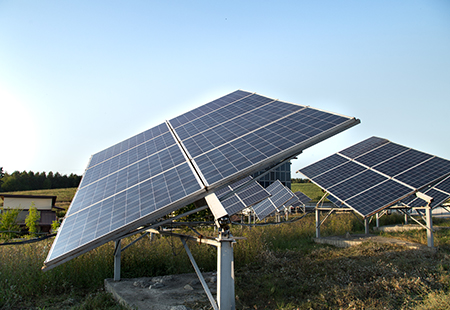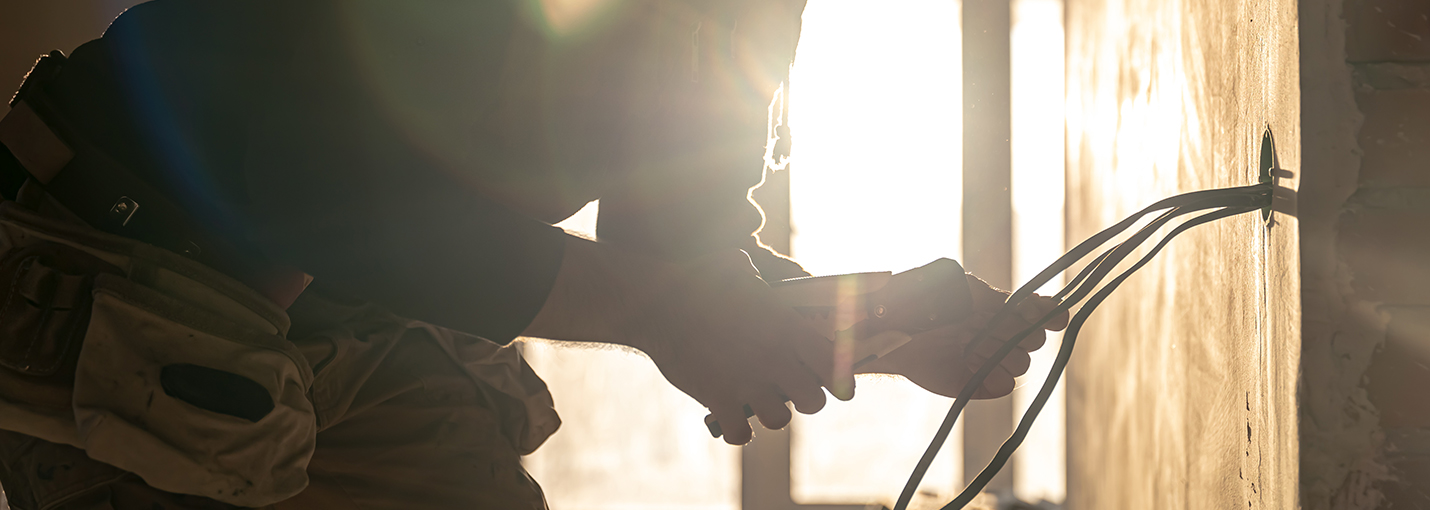The Dangers of Asbestos Exposure in Electrical Wiring and Components
Electricians Should Use Caution and Protective Equipment When Working on Older Homes and Buildings.
From the early 1900s right through to the late 1970s, asbestos was commonly used to manufacture a wide range of building materials. With its insulating and fire-proofing qualities, this mineral was considered a virtual wonder product for many applications, particularly in the field of construction and home appliances.
Asbestos Was Used In Electrical Equipment and Wiring of All Kinds.
  |   |   |
Sadly, the devastating effects of being exposed to asbestos were largely concealed and did not become public knowledge until after many decades of its use. Exposure to asbestos is now understood to cause lung diseases and mesothelioma, a particularly aggressive form of cancer.
Why are electricians at risk of asbestos exposure?
When asbestos begins to deteriorate and crumble, the fibers can be easily inhaled. This is known as friable asbestos. Asbestos fibers are microscopic and can easily become airborne.
Electricians are at particularly high risk due to the variety of asbestos-containing products they may come into contact with, and their proximity to it while working.
Older suburban homes, demolition sites, and powerhouses can all expose workers to unsafe levels of asbestos dust. Inhaling or ingesting these fibers over an extended period can lead to disease and asbestos-related cancers.
How are electricians exposed to asbestos?
Electricians and electrical engineers often carry out potentially dangerous work and take many precautions to ensure their safety. Exposure to hazards is all in a day’s work for an electrician. Still, asbestos is insidious in its attack, as breathing in its microscopic fibers can cause lung disease and mesothelioma decades after exposure.
While asbestos is no longer abundantly used to manufacture products and building materials, electricians are still at risk of exposure. Whenever an electrician is working on wiring within an older building, they risk exposure via materials that contain asbestos.
Chrysotile is a dangerous type of asbestos frequently used in electrical wiring and components.
Chrysotile is a form of asbestos that was once commonly used to insulate wiring, and electricians must be cautious whenever felted insulation surrounds any old wiring or breaker boxes they are working on. Other machinery and electrical products that electricians must be wary of include:
- Fuse boxes and panels
- Hot water tank insulators – old water heaters often feature an insulating blanket made using asbestos
- Arc chutes
- Cable wraps – asbestos paper (or molded asbestos plastic) was a cost-effective way to cover large electrical cabling. As this material degrades over time, the fibers become airborne easily
- Asbestos cement sheets
- Generators – asbestos-containing materials were once used in the manufacture of generators to help avoid overheating
- Pipe lagging
- Plastic panels – due to their resistance to heat, electricity, and moisture, asbestos-containing moldable plastics were commonly used to make electrical panels
- Main electrical meters
- In-ground pits and conduits
- Turbines – pipes, boilers, and turbines in older power plants typically feature asbestos
Areas where electricians are most often exposed to asbestos include attics, basements, boiler rooms, ceilings, industrial facilities, electrical boxes, commercial buildings, and older homes and schools.
Indoor work poses even more risk due to the potentially higher concentration of asbestos fibers in the air.


An electrician’s risk of developing mesothelioma
Today, the primary concern for electricians is working on older buildings and machinery, and all of the necessary steps should be taken to handle and remove any asbestos-containing materials safely.
Asbestos-related illnesses often only appear decades after asbestos exposure.
Repeated exposure also increases the risk of developing mesothelioma and asbestos-related lung cancer.
A study published by the International Journal of Epidemiology evaluated the presence of asbestos fibers in the lungs of individuals exposed to the mineral. This measurement is called the ‘lung burden’ and often correlates with a mesothelioma diagnosis and mortality.
The study found that plumbers, painters, and electricians had an increased lung burden compared to other construction workers and individuals with no occupational exposure. The conclusion was that electricians are nearly 16 times more likely to suffer from mesothelioma than the rest of the population. The highest levels of asbestos fibers were found in the individuals born between 1940 and 1954 – the peak of asbestos use.
Compensation for occupational asbestos exposure
Mesothelioma is an aggressive form of cancer that is difficult to treat, and many electricians and their families file asbestos lawsuits seeking compensation to help with medical costs and lost wages. Taking this action also holds negligent companies accountable, as many wrongfully continued to use asbestos despite being made aware of the risk to human health.
Recent cases of electricians who received compensation for asbestos exposure include:
- A firefighter and electrician from North Carolina was exposed to asbestos while working at FJT Electric Inc. in the nineties. He subsequently developed an asbestos-related disease and was awarded almost $4 million.
- An electrician called Eusebio Jacob filed a claim against Rockwell Automation, Inc. and PLENCO (Plastics Engineering Company) for occupational asbestos exposure. Jacob came into contact with asbestos while working at their Guam Navy Ship Repair Facility from the sixties to the eighties. Jacob developed malignant mesothelioma. The lawsuit states that the companies had continued to use the deadly material despite being privy to scientific and medical data indicating the hazardous nature of asbestos.
Asbestos Bankruptcy Trust Compensation for Electricians Exposed to Asbestos
In addition to civil litigation for asbestos-related illnesses like mesothelioma and other cancers, there is over $30 Billion available to compensate those harmed by asbestos.
Under order of the court, this money was placed in trusts by asbestos companies and can only be used to pay medical bills and other costs of those who were injured by exposure to asbestos.
This compensation is available without filing a lawsuit. Speak to an asbestos attorney like the Law Offices of Justinian C. Lane, Esq. at www.asbestosclaims.com to discuss your options.
Final thoughts
The prevalence of asbestos-containing materials lies in older structures. That said, it is still legal for manufacturers to process, import, and distribute construction materials that contain asbestos. Examples include vinyl flooring, pipes, and corrugated cement sheeting. Modern electricians must always evaluate the risk of exposure before proceeding with any work, new or old, particularly if any existing material must be disturbed.
AsbestosClaims.Law
If you believe that your home was contaminated with asbestos, you could be entitled to significant compensation—money you could use to cover the costs of asbestos removal services, pay for medical treatment, and preemptively protect your physical well-being.
In addition to legal claims, veterans disability, social security and employment protection like workers compensation, FELA and The Jones Act for maritime workers, there are asbestos trusts that have been set up to compensate those harmed by asbestos without having to file a lawsuit.
If you have any additional questions or concerns related to asbestos, including testing for exposure or how to file a claim, please get in touch by email at [email protected], or call or text us at (833) 4-ASBESTOS (427-2378) or (206) 455-9190.




